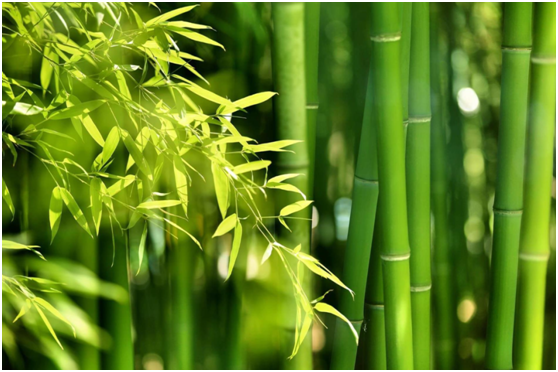Role of Bamboo in Ecosystem
2021-04-12
Bamboo, which belongs to the grass family, is one of the fastest growing species of the plant kingdom. Its herculean attributes are not at first obvious when encountered in the forest. Although its hollow stems that bend in the wind may make it appear weak, its provision of a wide variety of ecosystem services — defined as “the direct and indirect contributions of ecosystems to human well-being,” makes this an invaluable plant.
Bamboo is a grass with high biomass production potential and stress tolerant nature, which is a perfect model to be used for phytoremediation purposes. Different parts of the plants including roots, shoots, rhizomes, leaves, and fibers can assist in environmental clean-up from wastewater, air, and soil. Simultaneously this also helps in carbon sequestration.

Let's review some ecological functions of the bamboo forest on soil protection & land rehabilitation, conservation of soil and water, and carbon sequestration.
1. Renewable resource
Depending on the species, bamboo can be harvested in one to five years. Hardwoods like oak take at least forty years to mature before they can be harvested. Almost 1 million acres of forests are lost each week worldwide to deforestation. Bamboo's versatility as a substitute for hardwoods offers a chance to drastically reduce that figure and protect the forests that we have left.
2. Soil Protection & Land Rehabilitation
The root systems of bamboo are shallow, massive, fibrous networks that are very effective in holding soil in place. In addition to stabilizing soils, bamboo contributes organic matter, increases fertility, microbial biomass and carbon content of soils. Because it can thrive in problem soils and it grows so fast, it is particularly efficient in repairing degraded land. Bamboo is also effective at up-taking and binding toxins such as heavy metal pollution in soils.
Further, unlike most cash crops, bamboo requires no agricultural chemicals to thrive, can grow to as fast as three to four feet daily. It can even survive with significantly less water supply. bamboo sequesters nitrogen and cultivation does not add chemicals to the environment. Planting bamboo can help improve overall soil condition, prevent onset of erosion especially in sloped areas.
3. Conservation of Soil and Water
Once hardwood forests are clear-cut and the stumps are burned to provide fertilizer and space for growing crops, erosion inevitably occurs as the topsoil and nutrients are washed away by rainfall. The eroded soil then clogs rivers and streams and affects the lives of people and animals living downstream. Bamboo roots remain in place after harvesting where they prevent erosion and help retain nutrients for the next crop.
Bamboos grow naturally as a component of forests, often as the understory. Their role in deciduous forests in areas with a pronounced dry season appears to be more significant in that the understory bamboo results in a reduction in soil erosion. The association of teak with bamboo is a common one, with significant benefits in controlling soil erosion.
4. Carbon Sequestration
Bamboo rapidly sequesters carbon in biomass and soil, taking it out of the air faster than almost any other plant. Bamboo absorbs carbon dioxide and releases over 30% more oxygen into the atmosphere compared to an equivalent mass of trees. Research demonstrates that bamboo can absorb as much as 12 tons of carbon dioxide per hectare per year, giving the plant a potentially crucial role in stabilizing our planet's atmosphere. Bamboo is excellent for absorbing greenhouse gases and producing clean, fresh oxygen.
Can bamboo save the planet? The answer to that question remains to be seen. But this amazing plant becomes more and more popular now. It is not only an ideal economic investment that can be utilized in many different manners but also has enormous potential for alleviating many environmental problems facing the world today. Future needs bamboo, make it happen!

